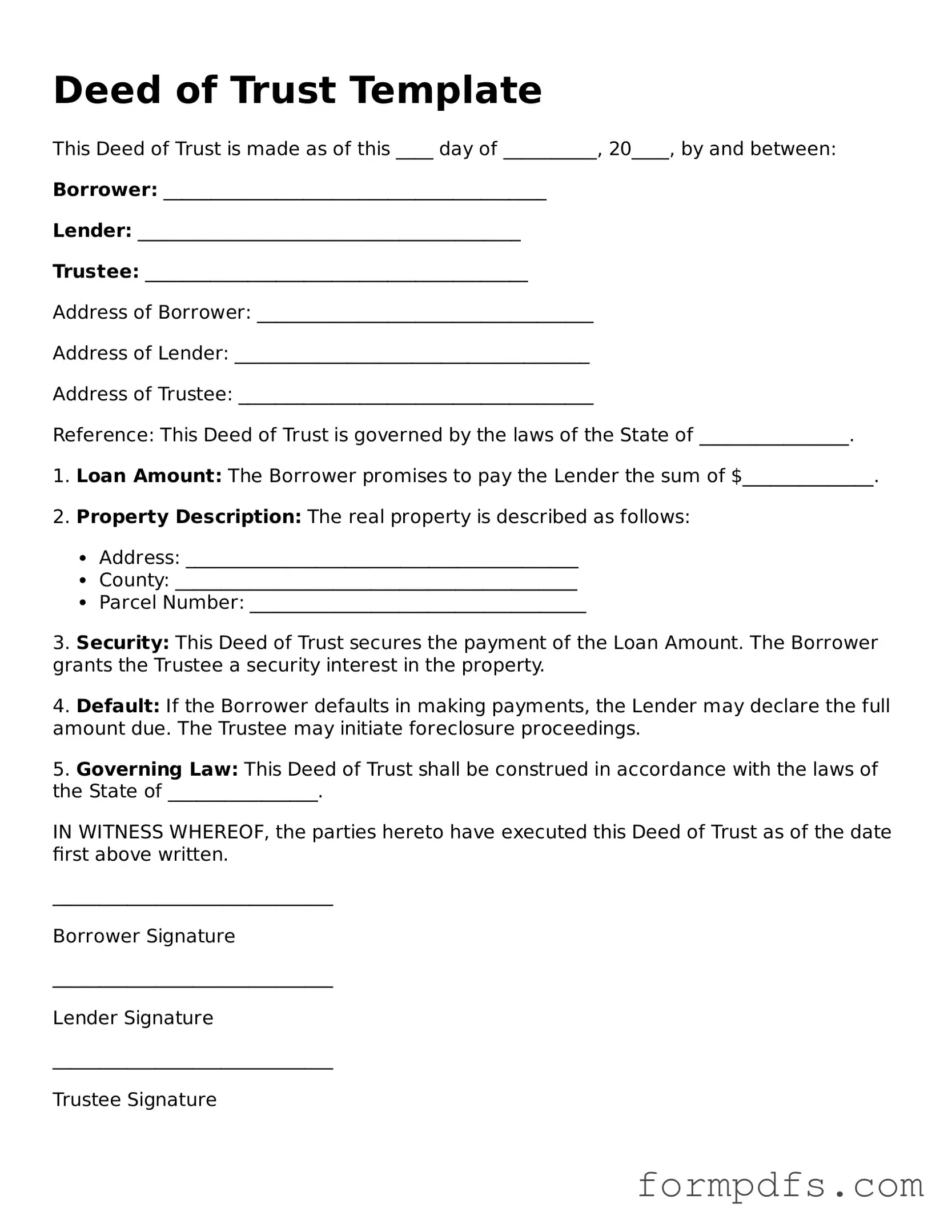What is a Deed of Trust?
A Deed of Trust is a legal document used in real estate transactions. It involves three parties: the borrower, the lender, and a third party known as the trustee. When a borrower takes out a loan to purchase property, the Deed of Trust secures the loan by giving the trustee the right to hold the title to the property until the loan is paid off. If the borrower defaults on the loan, the trustee can sell the property to repay the lender.
How does a Deed of Trust differ from a mortgage?
While both a Deed of Trust and a mortgage serve to secure a loan, they have key differences. A mortgage typically involves only two parties: the borrower and the lender. In contrast, a Deed of Trust includes a trustee who holds the title to the property. This arrangement can simplify the foreclosure process. In many states, a Deed of Trust allows for a non-judicial foreclosure, meaning the lender can foreclose without going to court, which can save time and costs.
What are the main components of a Deed of Trust?
A Deed of Trust usually includes several important components. First, it identifies the parties involved—the borrower, the lender, and the trustee. It also describes the property being secured. Additionally, the document outlines the terms of the loan, including the amount borrowed, interest rates, and repayment schedule. Finally, it specifies what happens if the borrower defaults on the loan, detailing the rights of the lender and the trustee.
Do I need a lawyer to create a Deed of Trust?
While it is not legally required to have a lawyer draft a Deed of Trust, it is highly recommended. Real estate transactions can be complex, and a lawyer can help ensure that the document meets all legal requirements and protects your interests. A lawyer can also provide guidance on state-specific laws and regulations that may affect the Deed of Trust.
What happens if I default on a loan secured by a Deed of Trust?
If you default on a loan secured by a Deed of Trust, the lender can initiate foreclosure proceedings. The trustee will typically handle this process. If the Deed of Trust allows for non-judicial foreclosure, the trustee can sell the property without going to court. You will receive notice of the foreclosure, and there may be a period during which you can cure the default or redeem the property. It’s crucial to understand your rights and options in this situation, so seeking legal advice is advisable.
